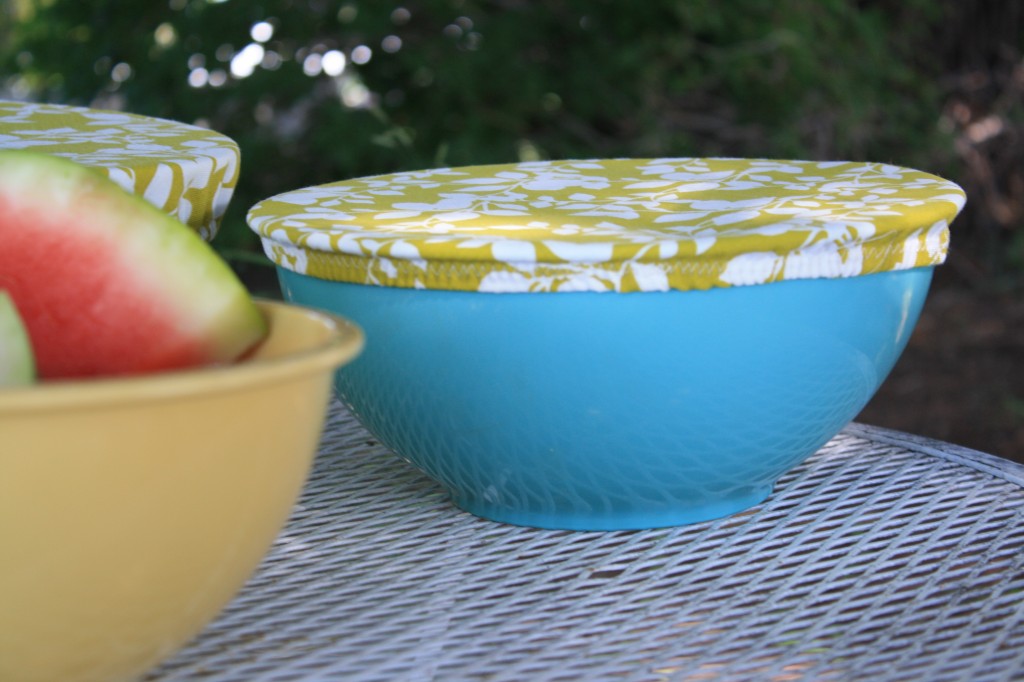Elastic stretches. Okay, duh. The reason I point that out is because when you’re sewing with elastic, you want to take advantage of it’s stretchiness. To do that, you need a shorter piece of elastic than the length of your fabric, so when you sew them together the elastic scrunches the fabric in, and can stretch back out to the original length of the fabric. If your fabric has stretch, then obviously you’ll get even more stretch when you’re done than you will with a non-stretch fabric.
There are two basic ways to sew with elastic, and we’ll be going over both of them in this lesson.
SEWING ELASTIC TO FABRIC
To allow some stretch in your stitching, set the stitch to either a longer straight stitch, or a zig zag (I prefer zig zag). Cut the elastic about 3/4 the length of the fabric and pin evenly to the wrong side of the fabric.
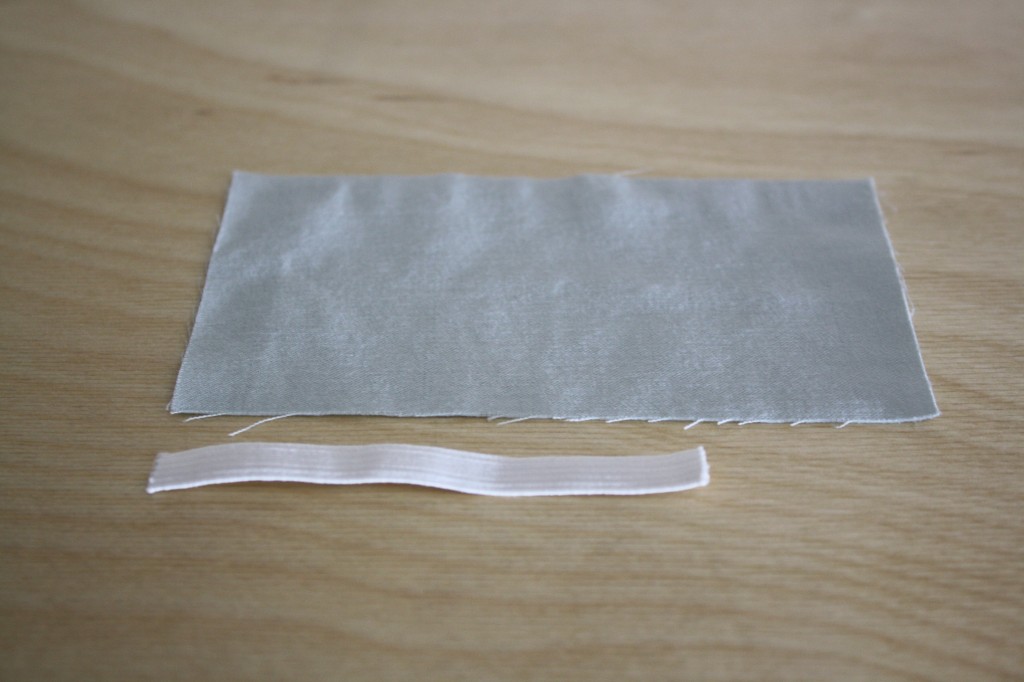
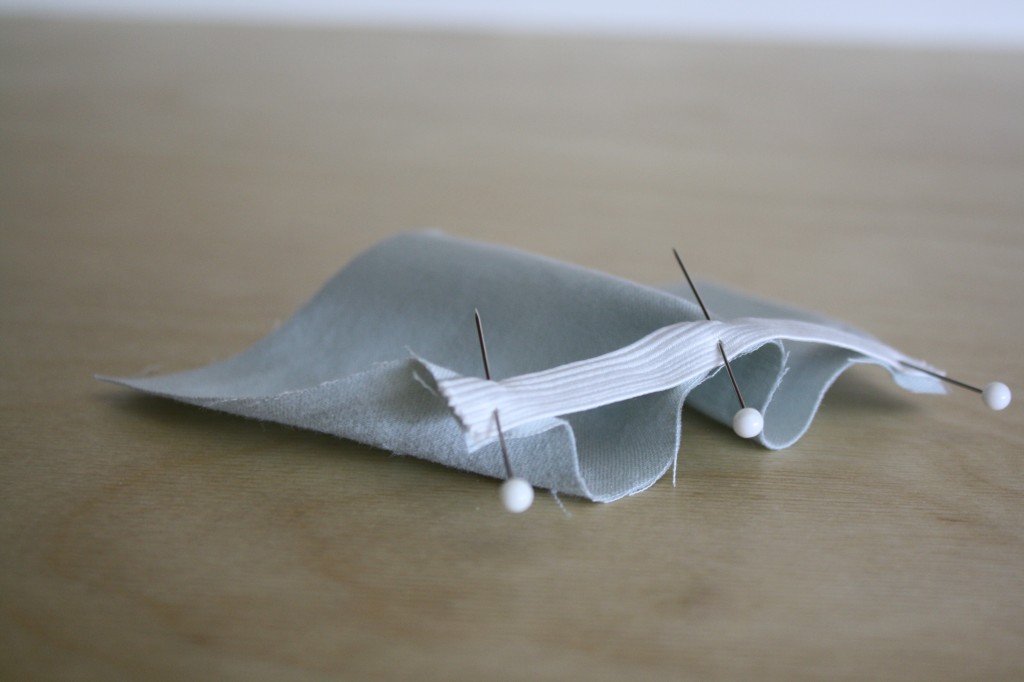
Sew a few stitches to secure the elastic to the fabric, then pull on the elastic as you sew. It helps to pull from both sides to prevent puckering at the needle.
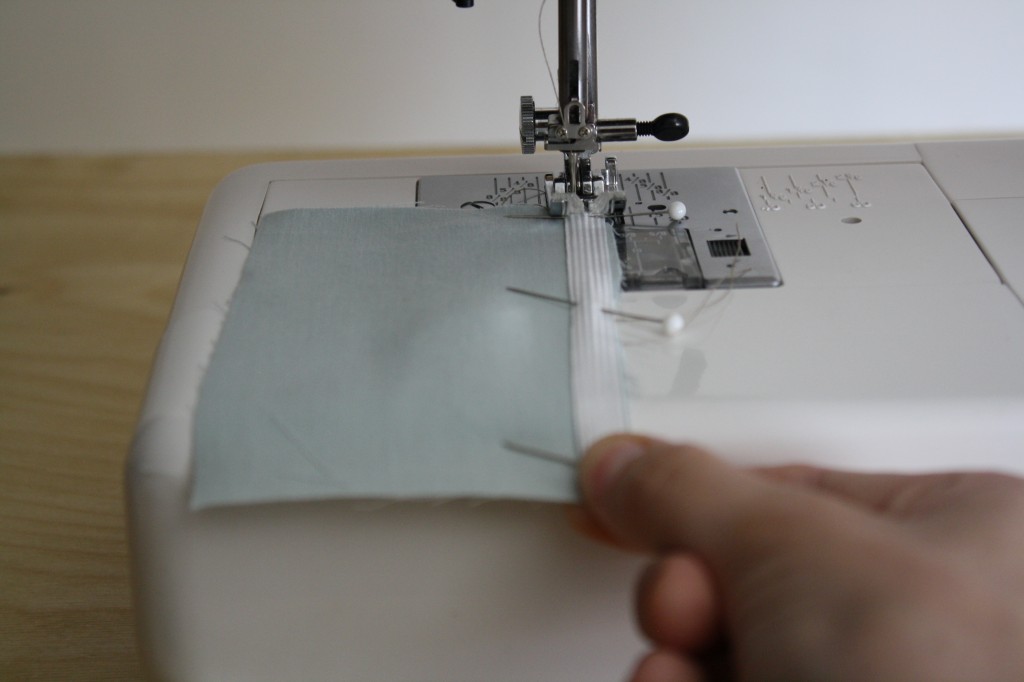
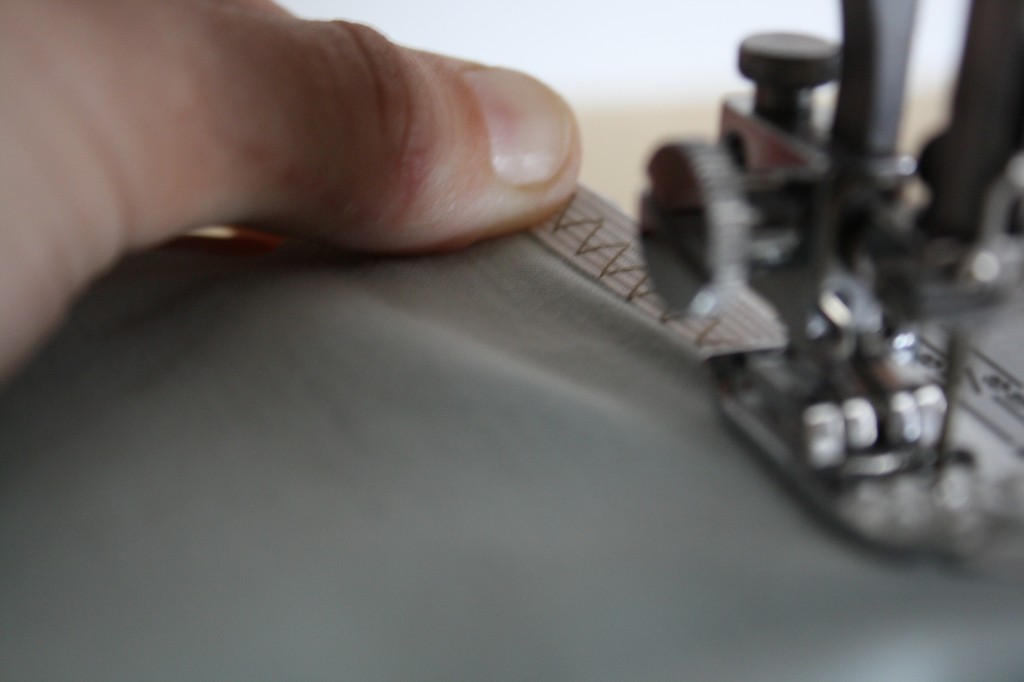
Stretch.
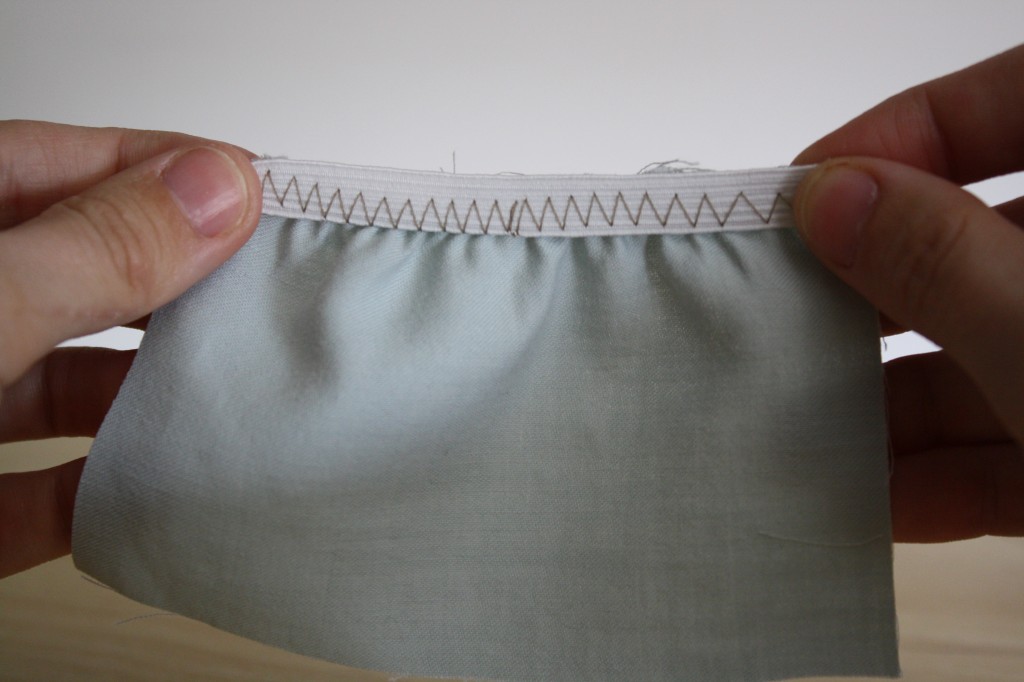
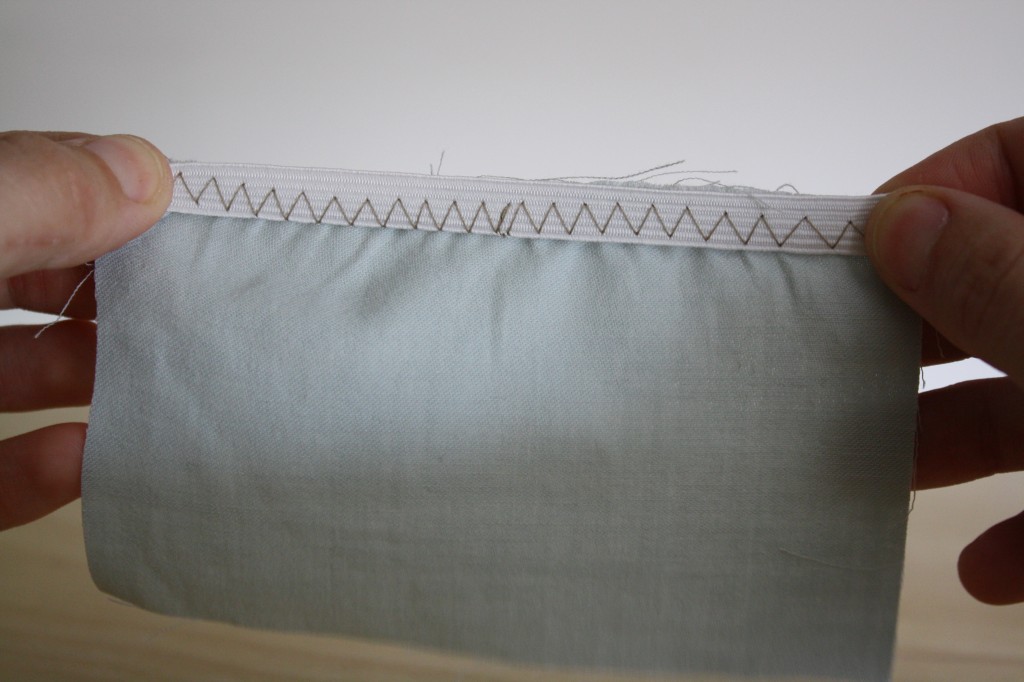
To hide the elastic (if it’s sewn on an edge), just turn the edge over and top-stitch the elastic down using a lengthened straight stitch or a zig zag.
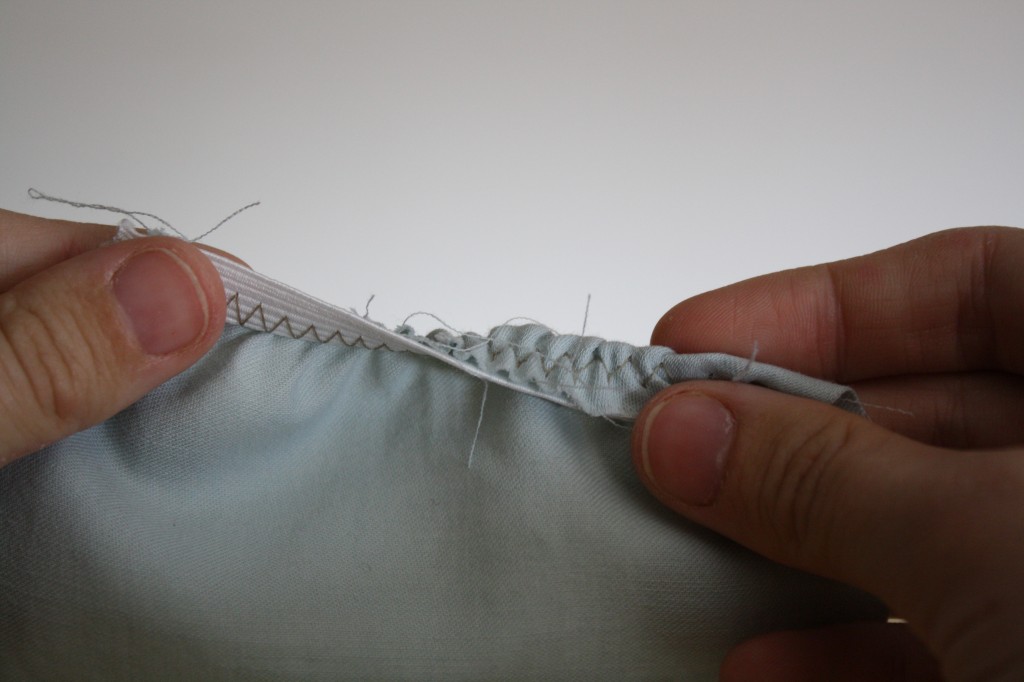
SEWING CASING FOR ELASTIC
For the casing sample, use a scrap rectangle 3″x10″. Fold it in half and sew down the side to make a large tube and press the seam open. This can imitate something like a waistband.
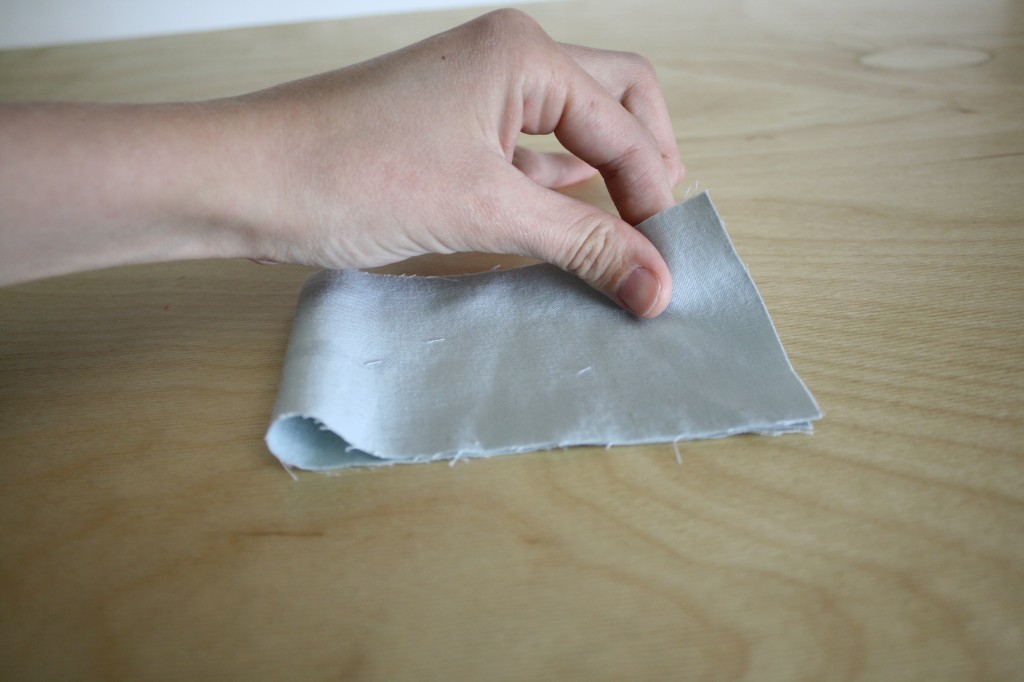
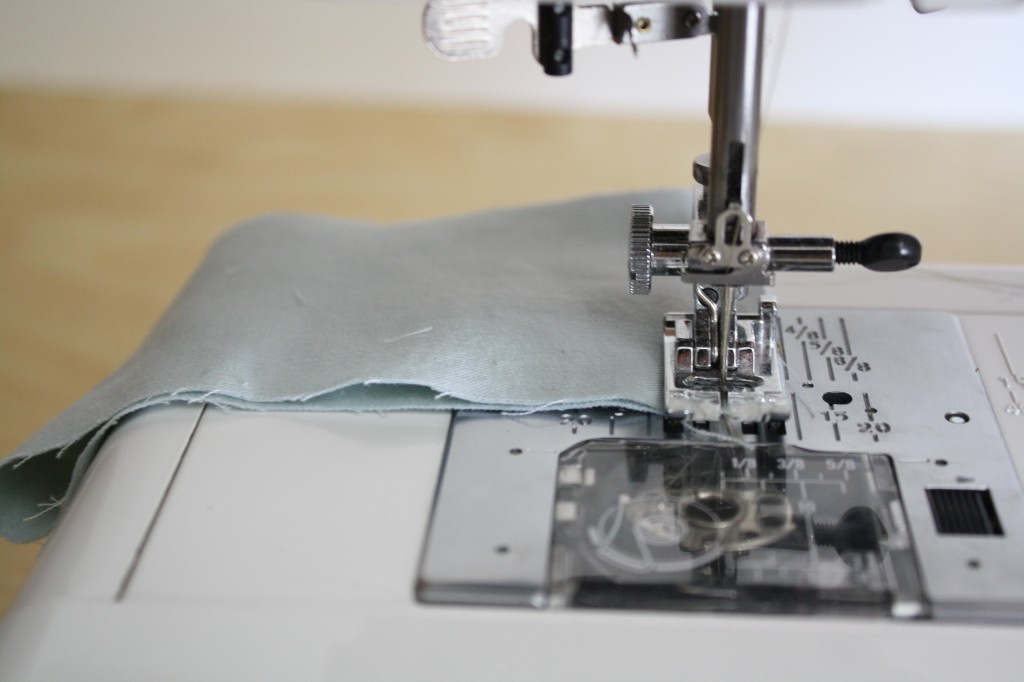
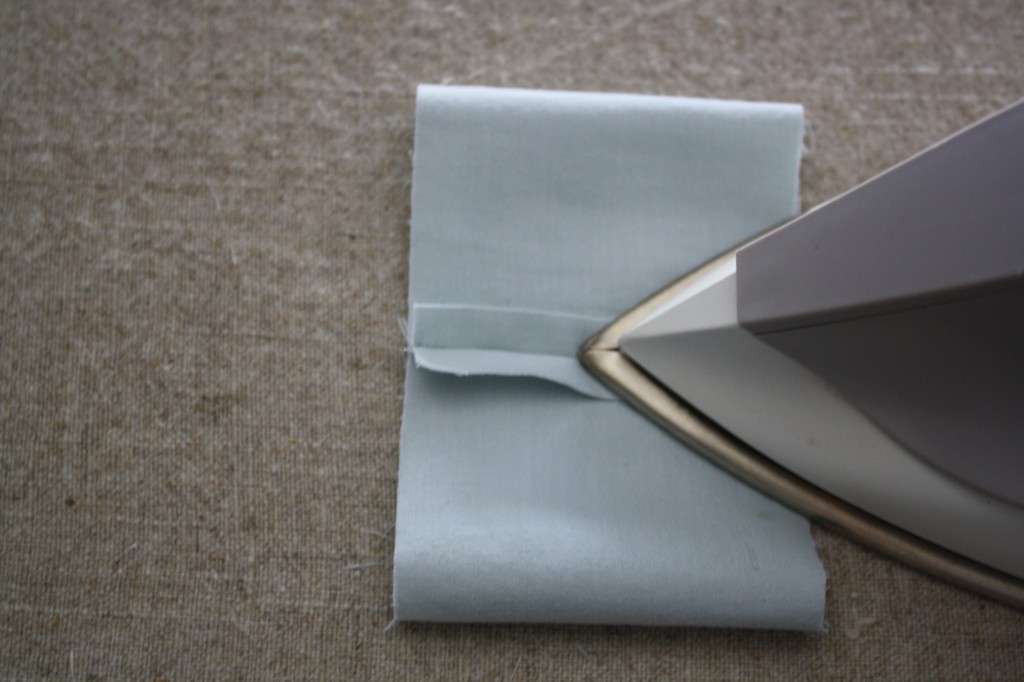
Casing is essentially a pocket to hold the elastic in place. Start by ironing the top edge under about 1/4″ all the way around. Then iron down once more about the width of your elastic + 3/8″ (to ensure there’s enough room to stitch the casing down and pull the elastic through). That creates a double hem. If you’re working with heavy fabric, make your casing larger.
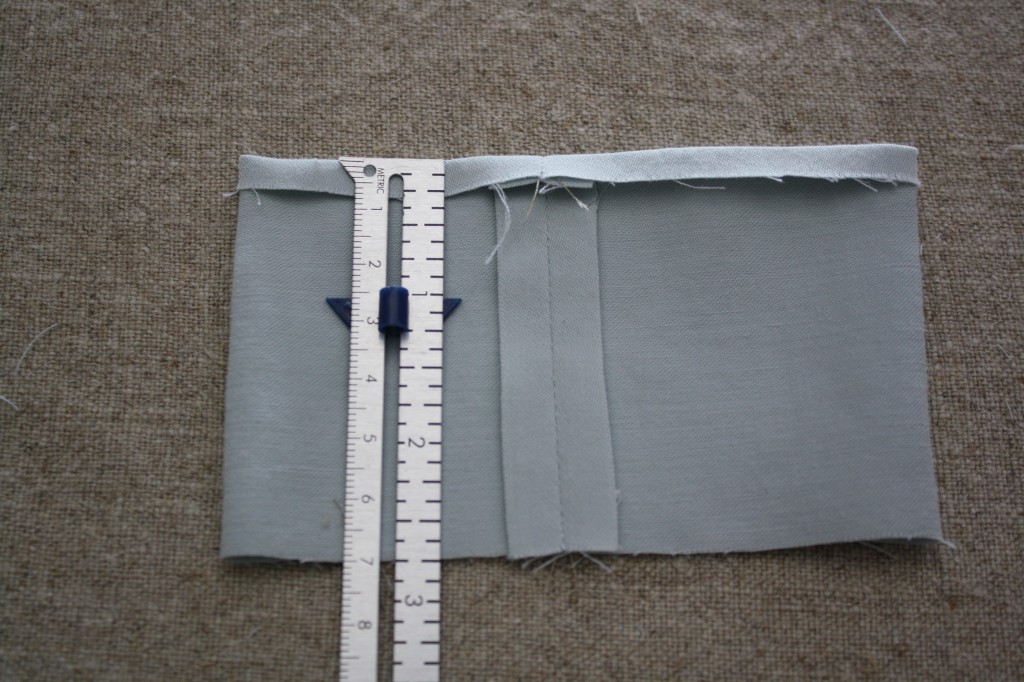
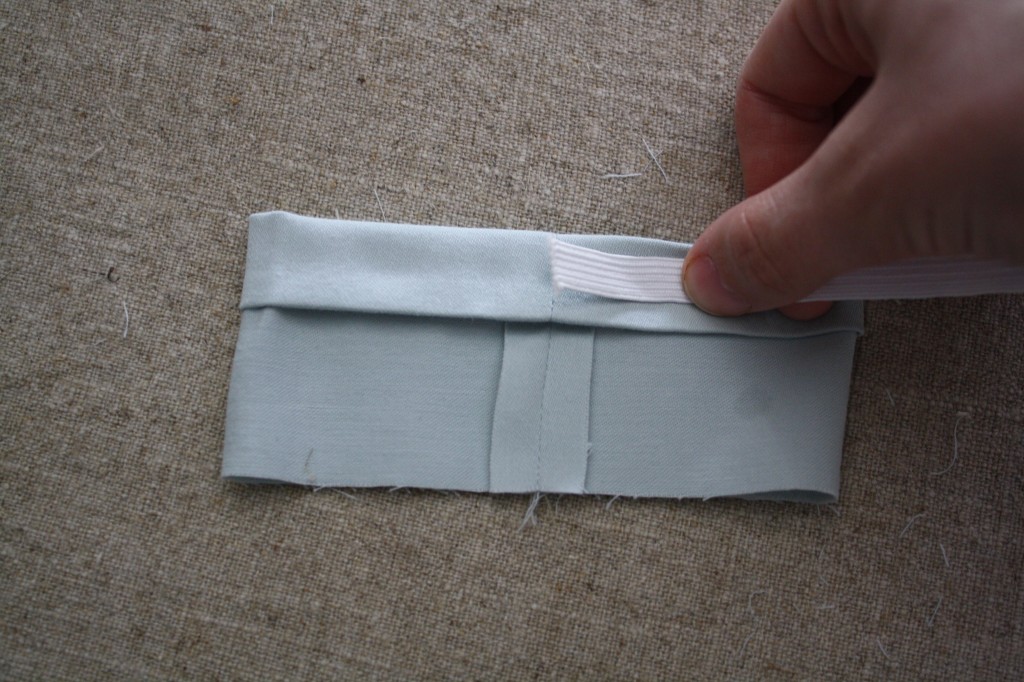
With the ironed edge facing up, top-stitch the casing down about 1/8″ from the edge, leaving about a 2″ opening from the starting and stopping points.
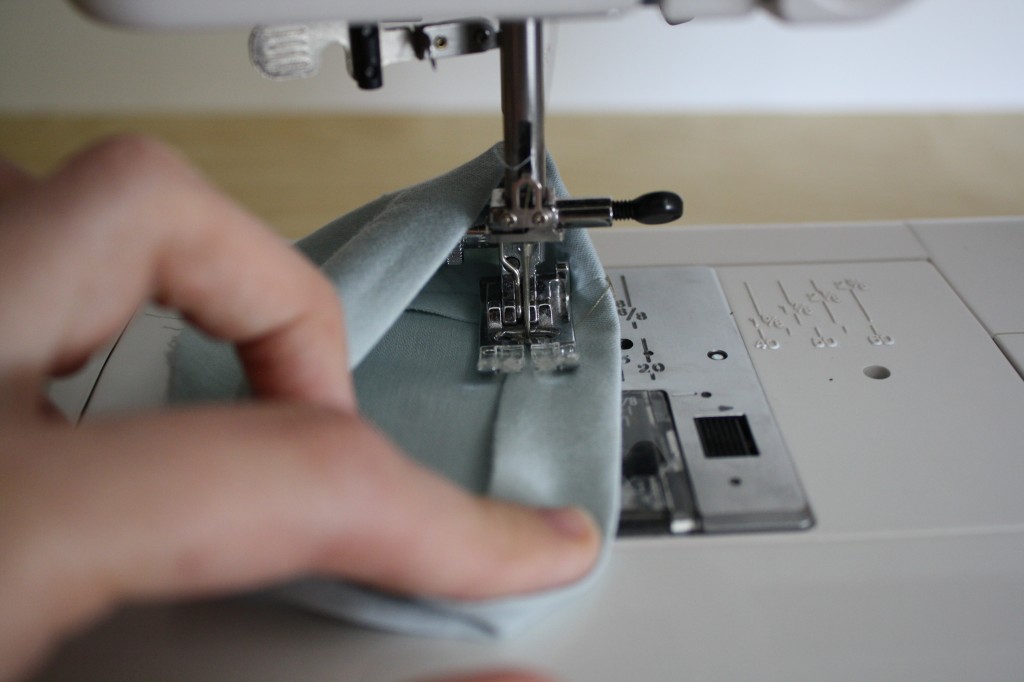
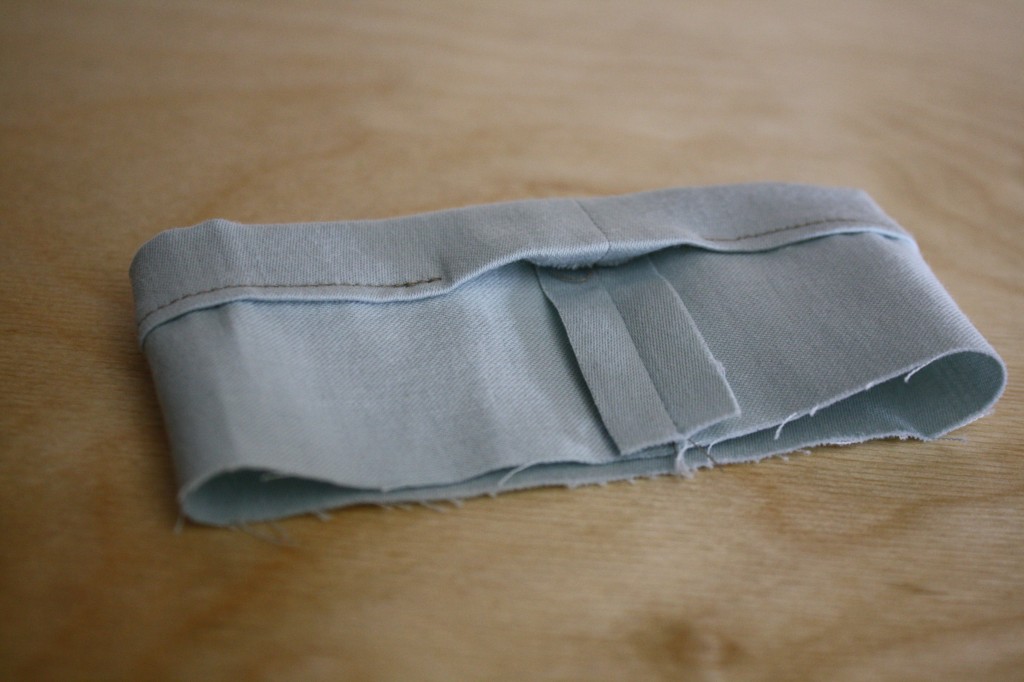
Attach a safety pin to the edge of the elastic and push the elastic through the opening. Use the safety pin to scrunch the fabric down and move your elastic through, being careful not to let the other end of the elastic inside the casing.
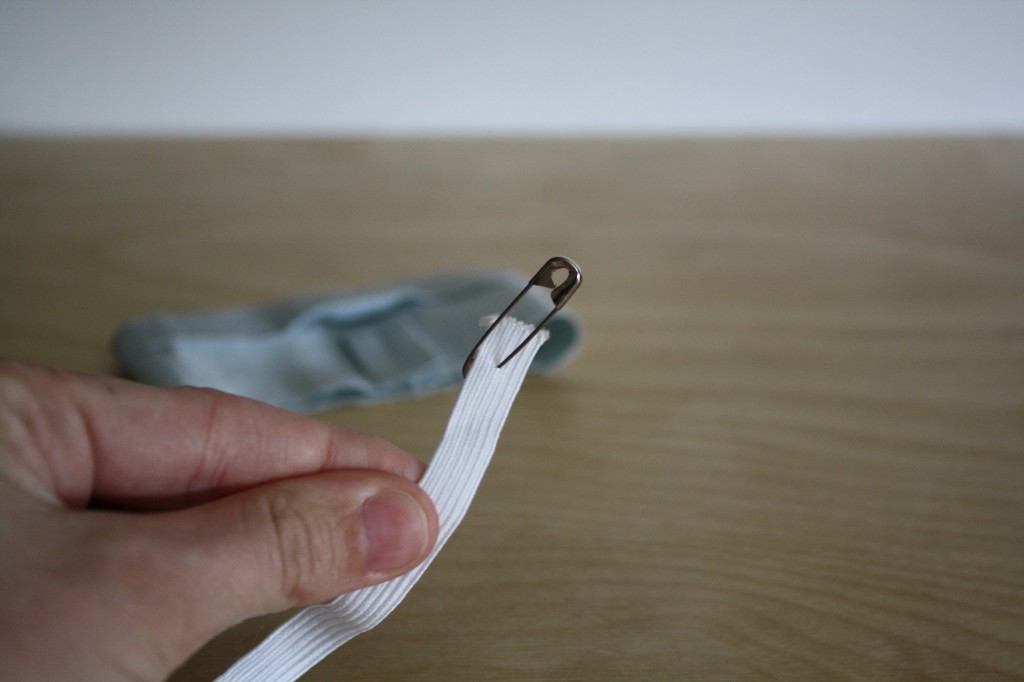
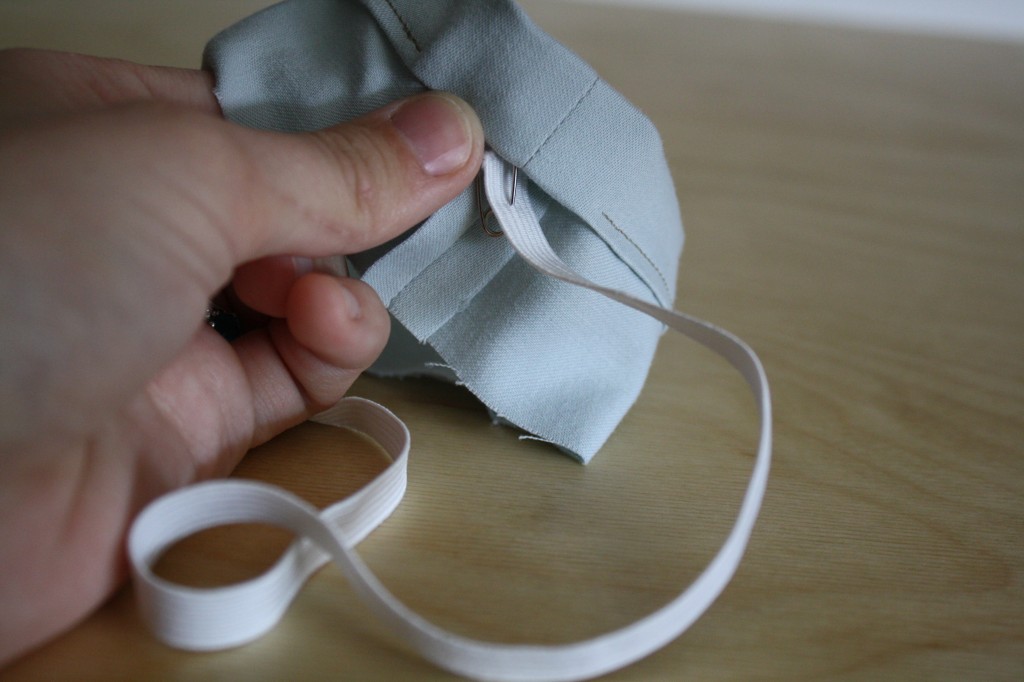
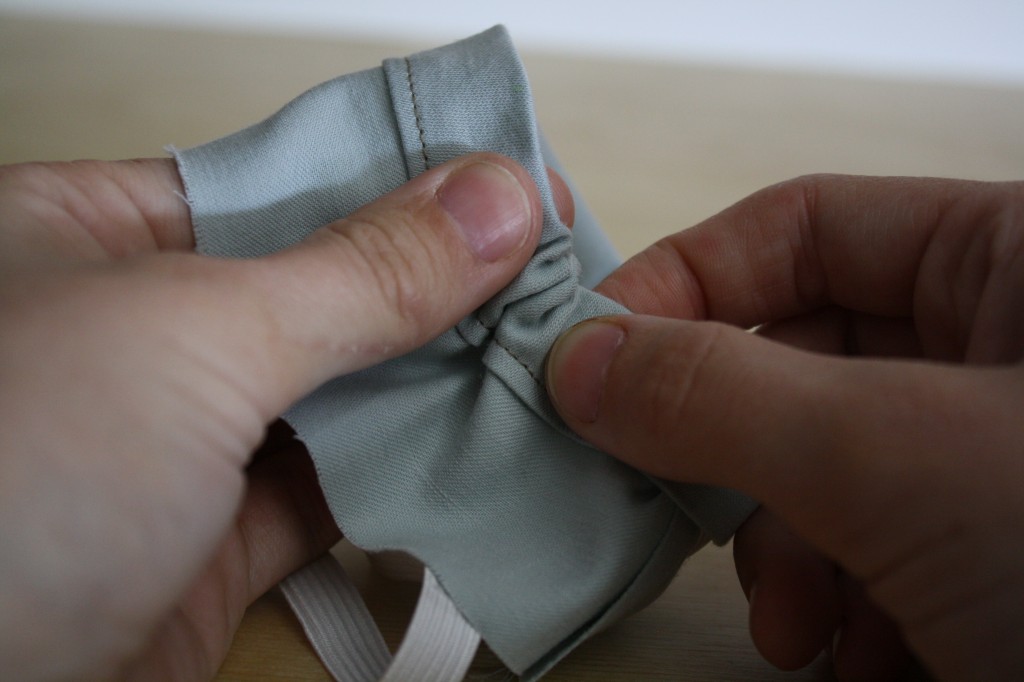
When you’ve reached the other side, overlap the elastic about 1/2″ and sew over it back and forth several times with a zig zag stitch. Remember, the elastic should be somewhat shorter than the circumference of the casing, to allow stretch.
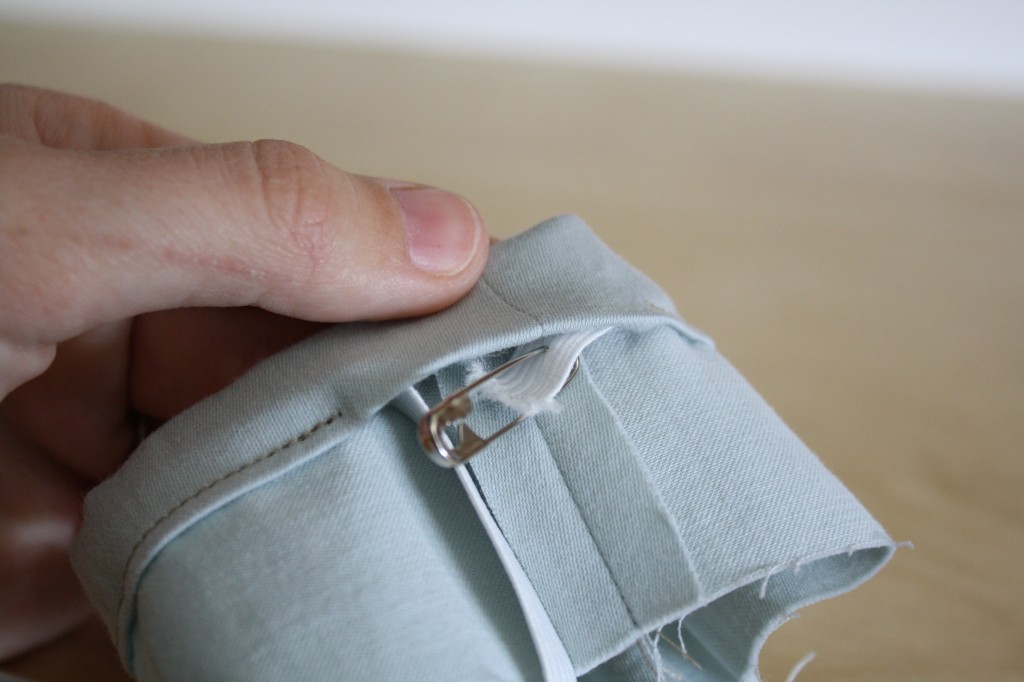
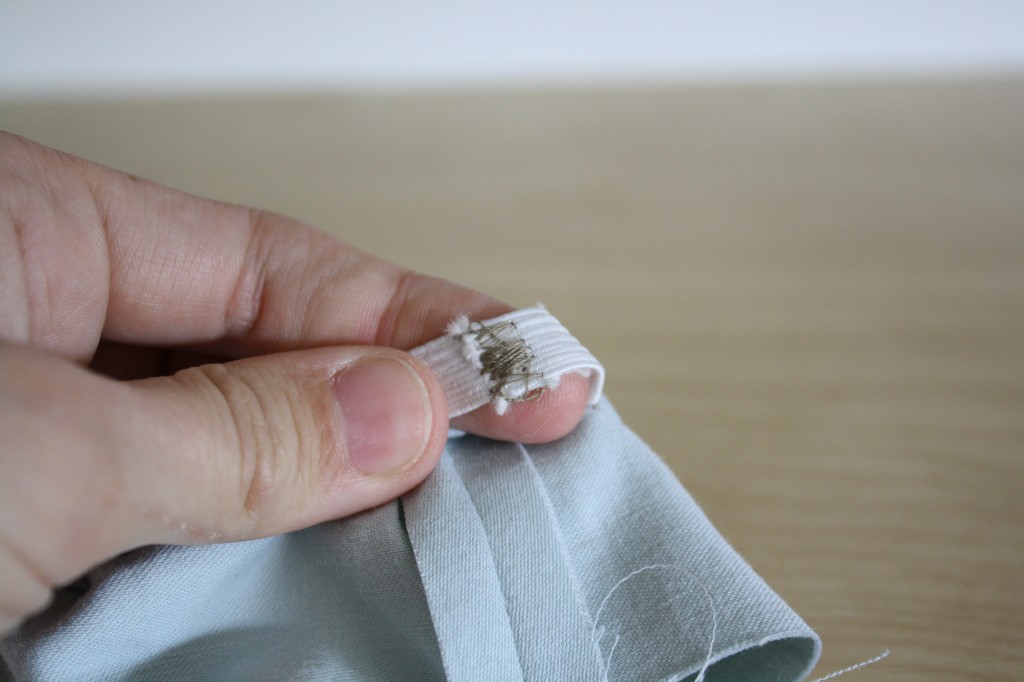
Clip the tail of the elastic, lay it flat inside of the casing, and sew over the opening to close it, trace stitching at the beginning and end a few stitches to secure the stitch.
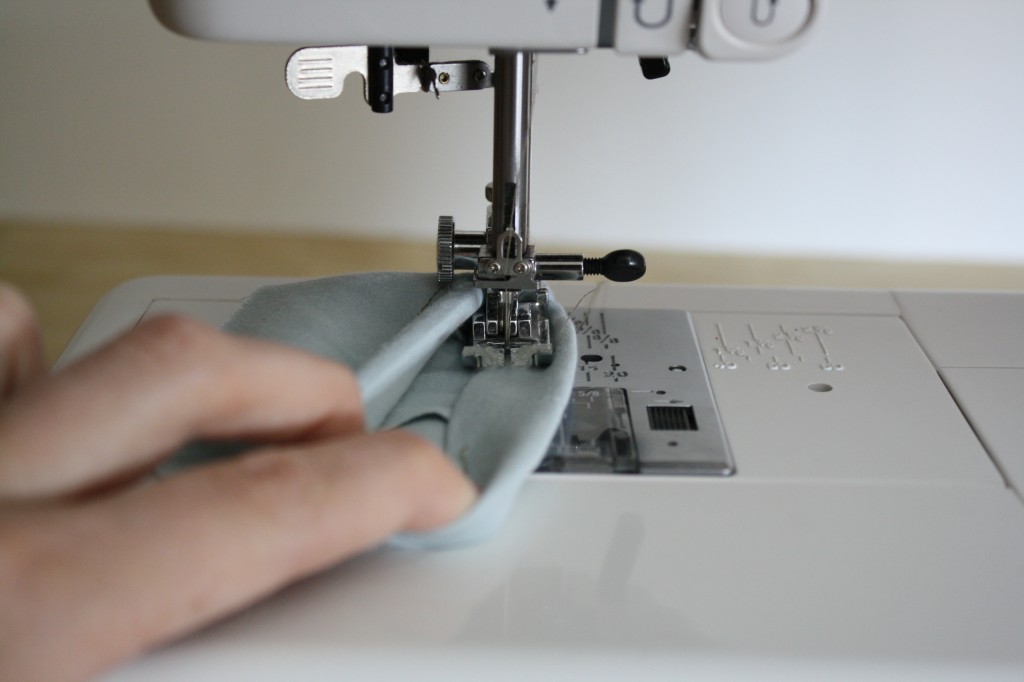
And stretch.
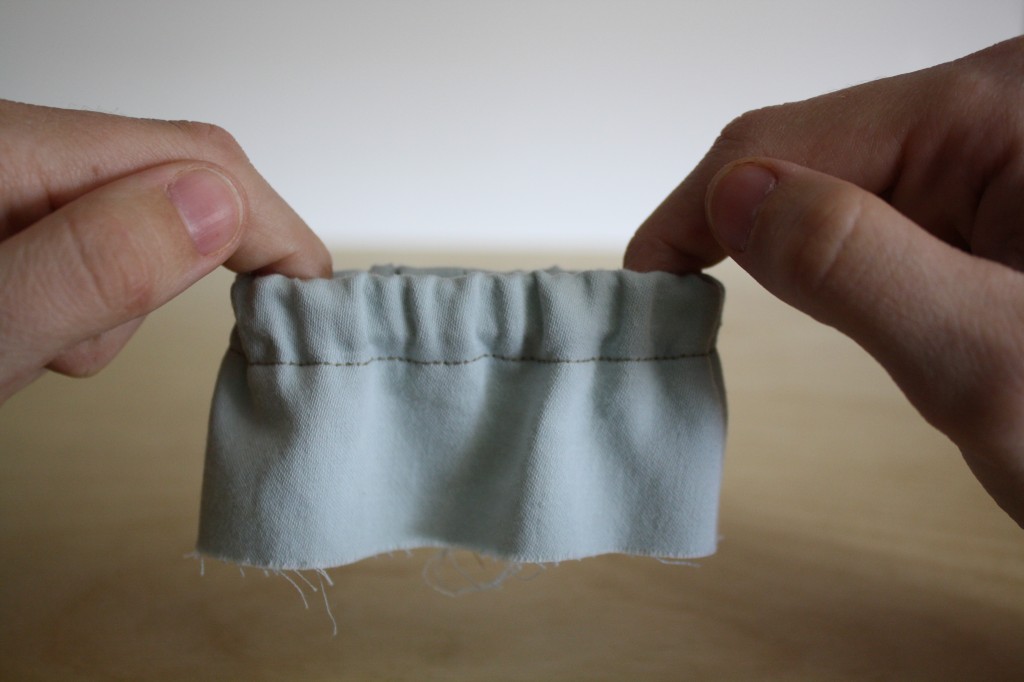
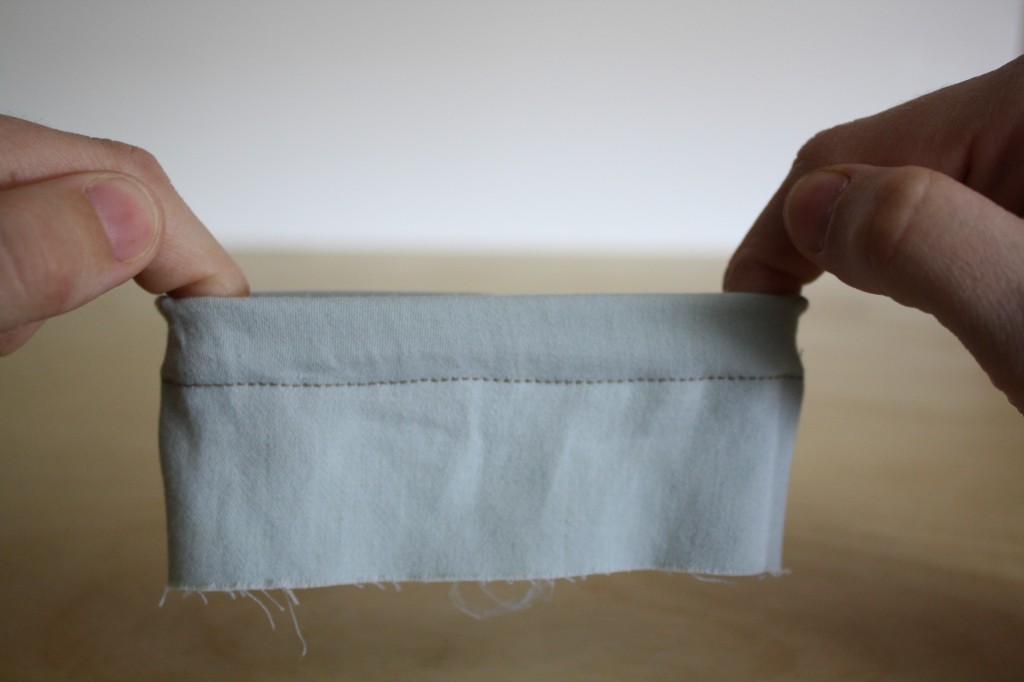
You may notice the reinforcing stitches where the opening was, but with matching thread it should be well hidden.
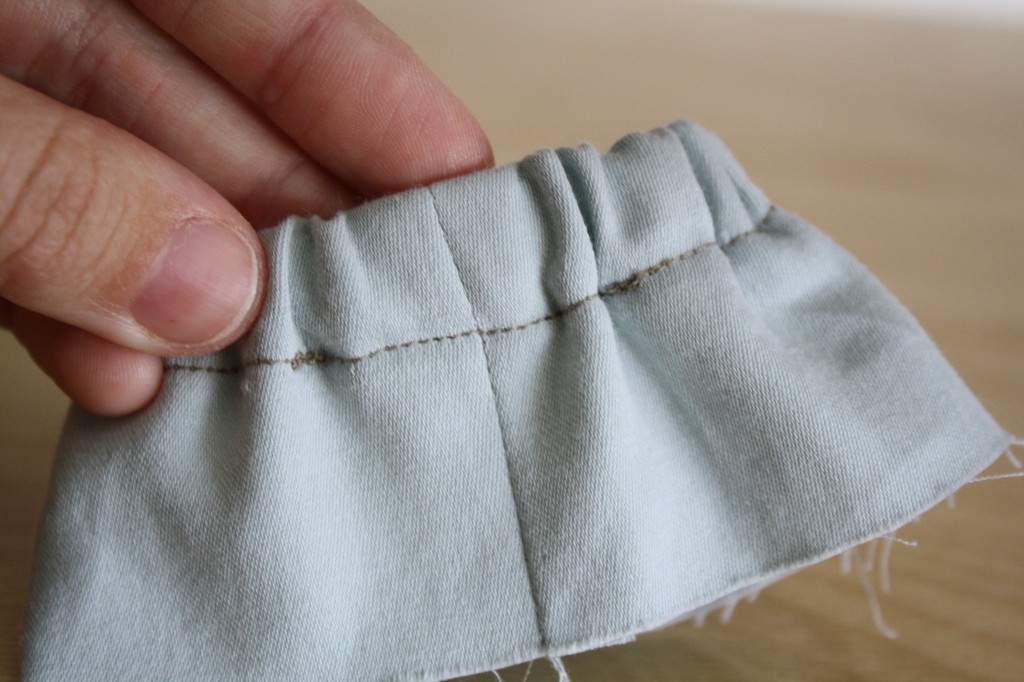
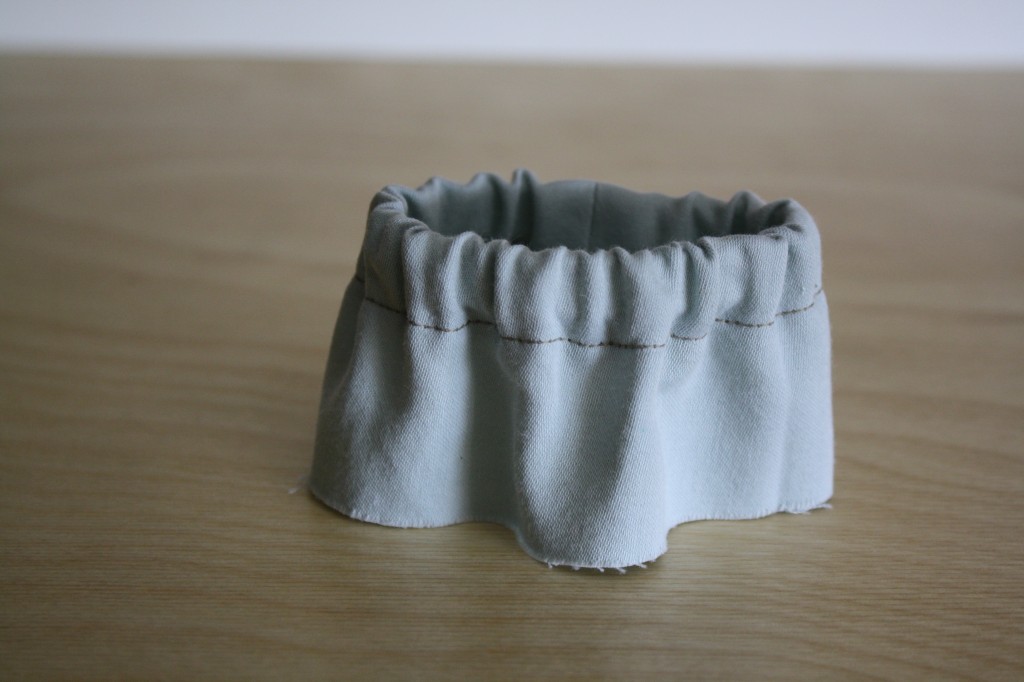
HOMEWORK
